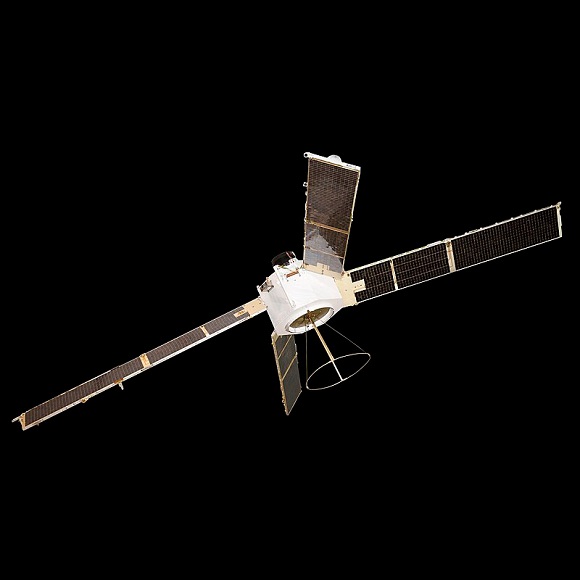The first satellite was launched into orbit in 1957, using internal batteries to run a simple radio transmitter. Satellites quickly grew more sophisticated as scientists and engineers added instruments, sensors, and communications equipment. Early satellites covered the exterior with solar cells to recharge internal batteries, but the solar technology of the day and the relatively small size of the satellites limited the amount of available energy. Thus, only four years after the launch of the first Sputnik satellite (June 29, 1961 to be precise) the US Navy launched Transit 4A, the first satellite powered (in part) by a new source of energy – a 3-watt radioisotopic thermal generator (RTG). RTGs produce power by converting the heat produced from radioactive decay into electricity. Since then, RTGs have become increasingly powerful with the Galileo mission’s RTG producing 570 W from 35 pounds of Pu-238 and the RTG unit on the New Horizons mission to Pluto producing 245.7 watts of power at launch from about 15 pounds of the same isotope. RTGs are used for deep-space missions because once a spacecraft is beyond the orbit of Mars there is too little sunlight for solar cells to provide sufficient power. But there have always been concerns about what might happen if there is an accident before the craft escapes Earth’s gravity. Something like what happened in April 1964.

What happened:
The Space Nuclear Applications Program (SNAP) was initiated in the 1950s with the charge of developing nuclear and isotopic power sources for spacecraft; odd-numbered devices were isotopically powered while even-numbered units were nuclear reactors. On April 21, 1964 a navigational satellite, Transit 5BN-3, carrying the SNAP 9A RTG, loaded with Pu-238 failed to make orbit and it broke up at high altitude while reentering the atmosphere, releasing some of the Pu-238. Due to the high altitude the plutonium was carried by high-level winds and reached all continents with the bulk of the radioactivity distributed in the southern hemisphere.
Nuclide(s) and activity:
About 17 kCi of Pu-238 was used for the RTG due to the high energy of the alpha particle it emitted (about 5.5 MeV). Elevated levels of Pu-238 were first noted in the atmosphere by balloon-borne samplers about August, 1964 The plutonium gradually sifted down to ground level of the next several years with over 95% being deposited by 1970, accounting for about 16 kCi of activity spread across the face of the planet.
Response:
Due to the diffuse nature of the deposition there was no need to try to clean up the contamination and, in any event, this would have been impossible considering that some of it came down over the ocean. Atmospheric sampling at various altitudes helped scientists to determine how much of the original plutonium could be accounted for as well as to estimate the amount of exposure to people on the ground.
Health effects:
Calculations based on air sampling indicated that the typical person received only about 36 mrem to the pulmonary lymph nodes over a period of 50 years and a global whole-body radiation exposure of about 0.04 micro-rem averaged across all people on Earth. There are no anticipated health effects from this level of radiation exposure.
Other impacts:
Since 1964 both the devices and the procedures for sending RTGs into space have evolved considerably; some of these changes are most likely the expected evolution of both technology and safety while others are most likely influenced by the SNAP 9A accident. With the latter, in particular, prior to the launch of any radiological or nuclear power unit a comprehensive study examines the probability of disaster and, in the event of an explosion or premature reentry, the resulting radiation exposure to those in the deposition “footprint.” Safety measures include better encapsulation designed to help the RTG better survive the stresses of reentry intact. This was tested during the Apollo 13 mission, in which the lunar module’s RTG unexpectedly returned to Earth when the LM was needed as a lifeboat of sorts to help the crew survive in the aftermath of an explosion during the trip to the Moon.
